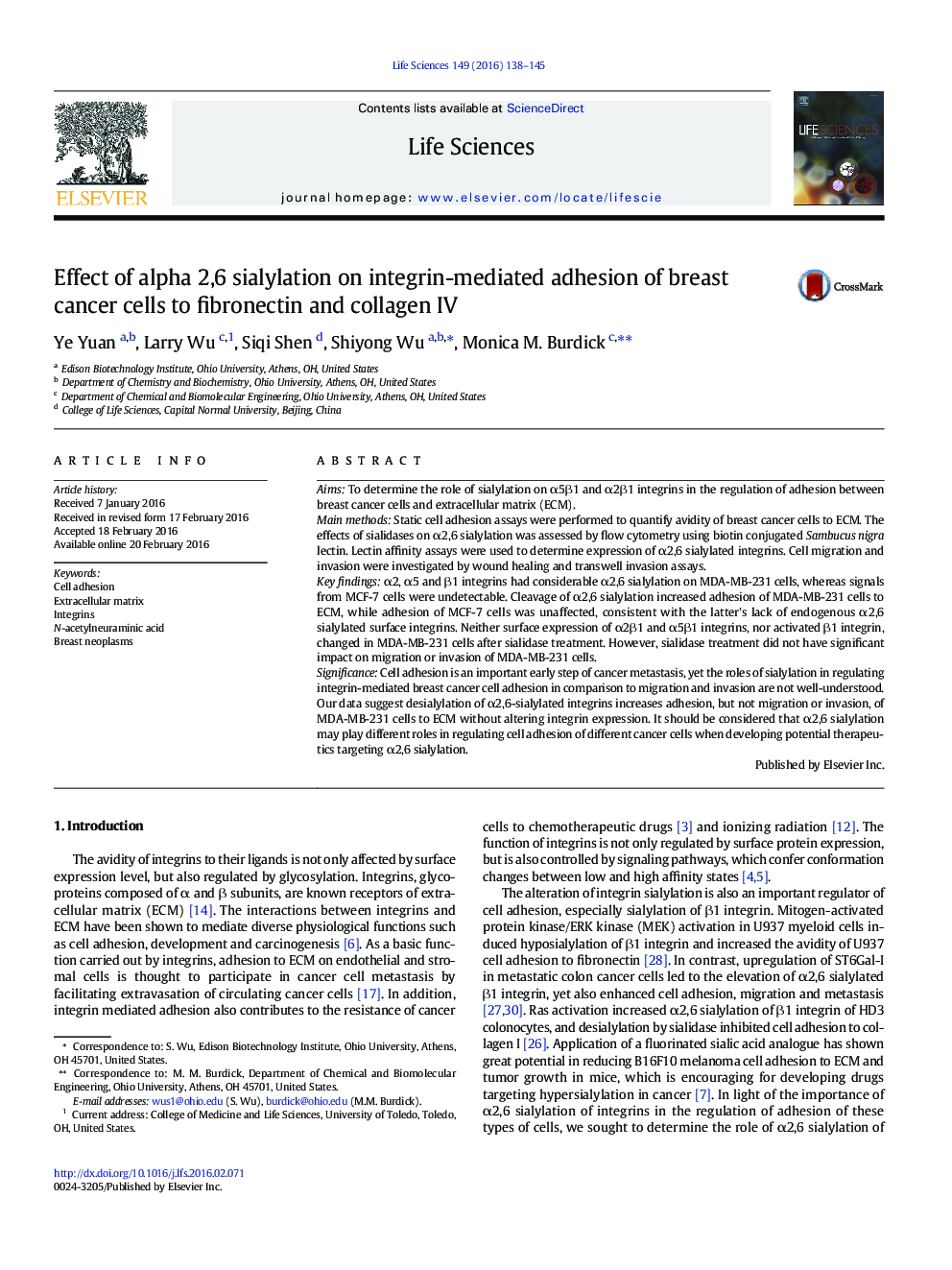| Article ID | Journal | Published Year | Pages | File Type |
|---|---|---|---|---|
| 2550648 | Life Sciences | 2016 | 8 Pages |
AimsTo determine the role of sialylation on α5β1 and α2β1 integrins in the regulation of adhesion between breast cancer cells and extracellular matrix (ECM).Main methodsStatic cell adhesion assays were performed to quantify avidity of breast cancer cells to ECM. The effects of sialidases on α2,6 sialylation was assessed by flow cytometry using biotin conjugated Sambucus nigra lectin. Lectin affinity assays were used to determine expression of α2,6 sialylated integrins. Cell migration and invasion were investigated by wound healing and transwell invasion assays.Key findingsα2, α5 and β1 integrins had considerable α2,6 sialylation on MDA-MB-231 cells, whereas signals from MCF-7 cells were undetectable. Cleavage of α2,6 sialylation increased adhesion of MDA-MB-231 cells to ECM, while adhesion of MCF-7 cells was unaffected, consistent with the latter's lack of endogenous α2,6 sialylated surface integrins. Neither surface expression of α2β1 and α5β1 integrins, nor activated β1 integrin, changed in MDA-MB-231 cells after sialidase treatment. However, sialidase treatment did not have significant impact on migration or invasion of MDA-MB-231 cells.SignificanceCell adhesion is an important early step of cancer metastasis, yet the roles of sialylation in regulating integrin-mediated breast cancer cell adhesion in comparison to migration and invasion are not well-understood. Our data suggest desialylation of α2,6-sialylated integrins increases adhesion, but not migration or invasion, of MDA-MB-231 cells to ECM without altering integrin expression. It should be considered that α2,6 sialylation may play different roles in regulating cell adhesion of different cancer cells when developing potential therapeutics targeting α2,6 sialylation.
